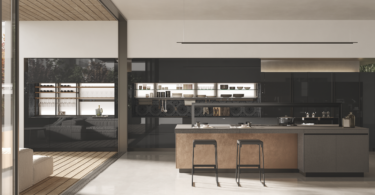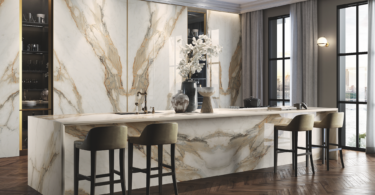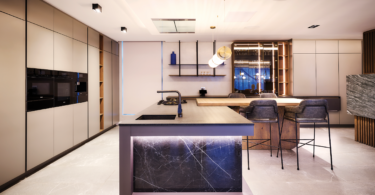White can be soothing and fresh. It can also be stark and sterile. Here’s how to make an all-white kitchen work for you…
The pros
● If you’re thinking long-term, a white kitchen is both timeless and classic. It defies all trends, is versatile and goes with anything.
● White works for any kitchen style – from modern, to country, to cottage, to vintage.
● It looks crisp and clean, plus it’s easy on the eye.
● Any colour you may want to add – from neutrals, to pastels, to bright hues – will make a big impact and stand out.
● White is easy to update and accessorise. You have more options to choose from in terms of tiles, appliances and décor with white cabinets than with a particular colour.
● White naturally makes a space feel bigger and brighter. By using white on all of your surfaces (cabinet doors, countertops and walls), they will appear to blend or flow into one another with no distinct lines.
● You can use various shades and textures of white to give your kitchen added character. Also, because white reflects light, the quality and texture of beautiful finishes (like marble) will stand out more.
The cons
● Too much white in a kitchen can sometimes make it feel cold and clinical. You also run the risk of it looking plain and bland or of it ‘isolating’ itself from surrounding rooms.
● A white kitchen needs regular maintenance and shows the dirt easily. White cabinets quickly reveal smudges, scratches or splashes from cooking.
● White finishes and surfaces also show their age. They tend to discolour over time (mainly due to exposure to direct sunlight) and accumulate grease and stains. Prolonged exposure to spills can cause permanent discolouration to worktops, so it’s best not to let those stains linger. It’s also a good idea to seal any grout.
● Watch out for too much ‘gloss’ on white cabinets – you don’t want to have to narrow your eyes against the potential glare.
Ways to ‘perk up’ an all-white kitchen
● Liven up the space with accessories. Think coloured glass vases and canisters on open shelves, showcase a collection of cookbooks, or even hang coloured utensils. Change colours again when you’re ready for another update – it’s the easiest and least permanent way to transform your all-white space.
● Paint the kitchen ceiling or window frames a bright colour, like yellow, which works especially well in kitchens and dining areas as it’s a happy and uplifting hue.
● White works beautifully when paired with natural tones, from wood to stone, to concrete. For instance, dark-wood flooring or wooden stools around a breakfast nook will add a touch of warmth. Throw in a large, bold rug to complete the look.
● Stainless steel appliances will help break up the white-on-white theme. Or swop out that white fridge for a cherry-red one or opt for a midnight-blue stove.
● Break solid-white cabinets with glass-front cabinets. You can even paint or wallpaper inside your glass-front cabinets for added interest.
● Bring in some colour with fabric – from window treatments (which will help shield your cabinets from direct sunlight and later discolouration) to covering stools and seat cushions.
● Paint your kitchen island a bold shade for one big block of colour.
● Highlight an all-white backdrop with a quirky splashback or hang a dramatic chandelier or other statement light fixture.
● Bring in some greenery. Turn large glass jars into an indoor herb garden by securing them with pipe clamps to a wooden board or crate and mounting this on the kitchen wall within easy picking reach. Or cultivate a windowsill herb garden.











Leave a Comment